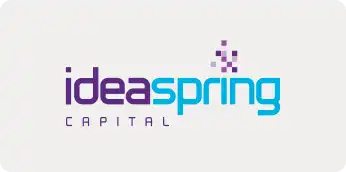I was hosting a session on branding for the startup accelerator Uppekha when I had the conversation that made me write this essay.
“How many of you are using Notion mainly for writing and sharing documents?” I’d asked. Quite a few founders said they were. “And how many of you use Dropbox to store things?” I’d continued. A good number said they were, again.
But, I had countered, if that’s what you are using Notion for, why not just use Dropbox Paper, an elegant product in its own right, and much easier to sync across devices because you already use Dropbox?
I didn’t get an answer, until one of the founders said that his younger team preferred Notion because it was, as he said, the hip product.
That stopped me cold.
The point I was trying to make was actually about brand perception: How Notion’s clear positioning was setting it apart from Dropbox’s slightly confused array of products.
But the answer I got explained it a whole lot better.
In an essay published last month, Matthew Guay, founding editor of the software community Capiche explained a kind of product he called positional software:
The best tools signify the value a craftsperson places on time and efficiency.
They’re emblematic of the role that craftsperson holds, signify their status and skill. And they’re honed over time to be best for that role.
Today’s positional software does the same. Its best tools, designed for specific roles, are carefully designed to make craftspeople better at their digital work. It is software that positions you as an expert. It is priced at a premium, and worth paying for — by those who need their features, and by those who want the status those features convey. They’re spread as digital artisans work in public, share their work, talk about their tools.
I’ll reiterate a point: They are spread, Guay says, as working on this new kind of software is shared in public, and it gives rise to a perceived elite, those who want the status that the tools convey.
Isn’t Notion a great example of what is being discussed? A product with superior design and clear positioning, very popular among the Silicon Valley crowd, and therefore conducive to signalling? Wasn’t Medium’s fiery early growth built on this? Isn’t Substack’s?
Hip, in the way the founder meant the word, posited that Notion was the in thing: It was cool, Dropbox Paper was not.
As a marketer, I’m very interested in that coolness, and in what it means. Is it something we can define and deconstruct? And if we can, can we harness it to aid our growth and marketing?
A few Indian product companies have already done so, but definitely not as many as we’d want. More importantly, is there a playbook to get to being a super cool startup?
I think there is: A five-pronged playbook the tactics of which will complement each other, compounding into a perfect storm of-sorts that will keep growth going.
I have tried as much as I can, within this narrative framework, to give examples from within the Indian ecosystem. When I have not, well, that’s the point.
Let’s dig in.
Storytelling
In western Wales, there’s a sleepy town called Cardigan. It has a population of 4000 people. From the outside, there seems to be nothing going on here, like the numerous other lovely towns and villages along the Welsh coast.
You’ll have to look closer.
A small factory in Cardigan makes the cult jeans brand Hiut, beloved and extolled by the fashion elite all over the world.

Now imagine that for a second. A small factory in the middle of nowhere, competing with with the big brands that we all know — Levi’s, Wrangler, Lee, Pepe, Armani — and giving them a run for their money.
What’s happening here? I’ll tell you: On their website, they have a section called our story. This is what it says:
Cardigan is a small town of 4,000 good people. 400 of them used to make jeans.
They made 35,000 pairs a week. For three decades.Then one day the factory closed. It left town. But all that skill and knowhow remained. Without any way of showing the world what they could do.
That’s why we have started The Hiut Denim Company. To bring manufacturing back home. To use all that skill on our doorstep. And to breathe new life into our town.
So yes, our town is going to make jeans again.
Whoa! With a story like that, hell, I would import those jeans to India, and happily pay whatever silly taxes I have to.
But this is how they carved out a niche for themselves in a market worth more than $100 billion worldwide. They told a story.
They cracked open a highly competitive, highly brand conscious, almost saturated market with a story that made them unique. Isn’t that what we all want to do too, especially as SaaS becomes more and more competitive?
Software is not jeans, you say? That’s just a lazy excuse. If Drift can take something as ubiquitous as live chat, tell a story about conversational marketing, write a book that propagates that idea, and build a content engine on it, why can’t you? Remember Groove? If they could differentiate their startup in as crowded a space as customer support by telling a story about transparency, supported by content, why can’t you?
Why can’t we? I don’t know. But I do know that if we are going to make the startups we build cool enough to compete in the global market, the first thing we have to do is tell a great story.
Content
Notion’s head of marketing Camille Ricketts was on Pankaj Mishra’s Outliers podcast a few weeks ago. And as I listened, I found myself scribbling notes furiously. There’s one exchange that I underlined twice.
Pankaj: “Camille, what do you think are Notion’s first principles when it comes to marketing?”
Camille: “Oh, storytelling and distribution.”
It was the clarity and the simplicity in that answer that really impressed me. If you are able to tell great stories about your product, and distribute them to the audience you are aiming for, your job is done, isn’t it? I have been struggling for years to find a good way to articulate this, and there it was.
But that clarity did not come out of thin air. Before coming to Notion, Camille ran one of the most well-regarded content marketing programs in the world. And she did it in a very, very competitive space — Venture Capital.
Entrepreneurs today are very smart about venture capital. They know the kind of partner they want, the kind of firm they want to be associated with. They are doing the homework, and they are discerning. VC firms have to stand apart, signal who they are, what they stand for, and give founders a reason to approach them.

And as one popular marketing website puts it, Camille’s work at First Round Capital’s blog, First Round Review, “revolutionised content marketing for the Venture Capital industry.”
The Review needs no introduction, all of us in the industry have read it at some point.
If we break the content down along Camille’s ideas of storytelling and distribution, we understand what went into making it such a success — the storytelling is superlative, almost every article is a deep dive. The titles tell us all we need to know, there’s no clickbait. The design is superior, encouraging us to read. And there are no overt CTAs — First Round is educating, not selling. But it is also signalling. And when your content is just so ahead of everyone else, distribution takes care of itself.
This is First Round’s unfair advantage, making it look and feel premium, a word I’m using interchangeably with cool in this context. And Camille is adapting the same playbook at Notion, telling user stories in a way that makes me want to immediately sign up and use Notion, even though I have no real need for it.
Good content marketing is tough to do. Great content marketing, like what First Round have done, is even tougher. It takes time and resources, and startups don’t have the patience. Therefore, it is an opportunity for someone who does, and is willing to put in the long term investment into great content.
The resources to do this exist, in abundance, in our ecosystem. It’s the vision that’s missing.
PR
Martech startup Zarget was founded in 2015 by former Zoho executives Arvind Parthiban, Naveen Venkat, and Santosh Kumar. It was acquired in 2017 by Freshworks, making it one of the fastest high profile SaaS exits in our ecosystem.

We all know this. Zarget’s story is fascinating.
But to a marketer, Zarget was even more interesting. It was one of the startups that understood coolness, understood the glamour of being a startup with a story, and they used it. Since the time they began, they always seemed to be in the news. This was refreshing, because our startups are not necessarily good at PR. Zarget was. There can be many arguments why, but I bet having a marketer in the founding team (Arvind) had something to do with it.
One particular campaign I want to highlight is something they called Respect Startups, a platform where, as the Economic Times put it, “..startups and large companies can come together to offer budding startups assistance in the form of free trials for products, access to services, and office space, among others.”
In other words, it was a glorified exchange program for startups to barter products and services. Haven’t these things existed before, you ask? Yes, they have, and much bigger ones too.
But what was Zarget doing then?
I’ll tell you. It was telling a story around itself.
As Arvind put it, “When we started Zarget, we went through a phase where we required a lot of software tools to build our product. It’s difficult to spend too much money on buying licensed products when you are starting a bootstrapped company. Zarget, fortunately bagged early funding making things easier in terms of spending. However, to build a solid ecosystem there was a need for a community to help startups in need.”
It was brilliant marketing.
Here was a story, primed for press and tech blog attention, aided by a young startup and supported by other young founders praising it. Any publication would want to run it. And they did. I don’t know if it helped startups do what it was supposed to, but I know it got Zarget a lot of great press.
Zarget did a lot of other things at that time, especially around events, but I draw attention to this particular story because of the sheer ingenuity of it, its clear target — getting press, and also to demonstrate what’s possible.
Admittedly, Indian startups are getting better at this particular tactic, but there’s still lots of room for improvement. And we need to fill in that room if we are to compete with the world’s best.
Events and offline marketing
In 2018, Freshworks had a problem, of the ‘good to have’ variety.
Most products were hits, pitches were landing well, and the company was cracking large deals. Growth was strong.
But sales teams sometimes had problems with brand recognition in really large deal discussions in the US and Europe. Freshworks’ strong brand in Asia had not really penetrated deep enough into the west to allow them automatic brand recall. And this was starting to be a problem when sales was competing with big, homegrown brands.

This was one of the starting points for Freshworks’ Failsforce campaign, when the company hijacked Dreamforce by flying a blimp around Salesforce Towers. It caused a sensation on that first day, when all of tech looked up and saw an Indian startup making a statement. Salesforce did not respond, but even if they had, it would have played right into Freshworks’ hands.
How do I know all of this? Well, I was part of the team that executed this campaign, offline and online, and it was a blast. The idea was that we could increase aided recall (as opposed to unaided recall) by doing this. And by following that up with a concerted PR and content effort, we would increase brand recognition in these geographies.
And it worked. Both as a campaign and as a branding exercise, Failsforce was a massive success, earning us press and social media buzz.
But — and this was something I learnt then— another important part of a campaign like this is also signalling. The Failsforce campaign signalled that Freshworks was a company bold enough to do such audacious things, and this meant, in a very tech company-way, that it was cool enough for you to pay attention.
Now I know what you are thinking: How can you replicate something that probably took a million dollars or more to do? You need money to do things like this, no?
I don’t think so. Consider this — you are an Indian startup competing with Salesforce or some other valley behemoth. What is stopping you from paying a little Indian restaurant down the street to fill up a cart with tea and samosas, go stand in the corner, and give it away for free? All you have to do is brand the cart with your company colours and logo. This will mean that the next time they see your brand, they remember that you are an Indian company who once made them really delicious chai.
Won’t that work? I think it will. But I’ll tell you what it won’t cost.
A million dollars.
Social Media
Have you heard of the one-click-checkout startup Fast?
If you have not, then I can confirm that you’ve been living under a rock. Because if you are on social media and in technology, you cannot have missed them.

The founders Domm Holland and Allison Barr Allen met on Twitter. They raised a large round from Stripe, the certificate of fintech legitimacy if ever there was one. And they also hired Matthew Kobach, the former social media manager at the New York Stock Exchange and popular social media personality, to lead their content marketing.
How do I know all of this? Because I went and did some deep research? Nope. They told me all this, on social media; I was just there. And am I in any way interested in what Fast does? Not really, except that they are in tech too. But by talking about themselves, telling their story, they got my attention, and I read about them.
Fast is one of the new breed of super-social startups who are constructing world class brands by what they call ‘building in public’: Being open about what’s going on in the company, talking through their strategies, being responsive, and generally being super friendly to everybody. They run great campaigns (like this one), and celebrate recruits publicly.
If any startup is cool at this point in time, they are.
Fast also seem to prove the validity of the idea that the personal brand is as important, if not more important than the company brand, at least on social media. And they are doing a great job at executing on this, in the way its people are amplifying their company’s stories and messages.
How do we know it’s working, though?
Well, we are talking about them, are we not?
This is a strategy being employed by a lot of other startups in the valley, too. But not here in India, not yet. Does such kind of talent not exist? Of course it does. And we all know it. But our founders still languish far behind in using social media to create or support marketing efforts.
And if we are to build the kind of startups that make us go wow, we have to invest in social media from the get-go. It has to be part of the marketing strategy, not an afterthought as it is today.
So there you are, these are what I think we need to make cool, buzzy, news-worthy companies that sell themselves, and show the rest of us how marketing can really be done.
Also, please note that these are not standalone components. Each of the above tactics complement each other. For example, a great story automatically feeds great content, which helps the social media strategy, which attracts mentions and press attention, and so on.
Nor do you have to do all of them at once. You will have to start by getting the story right, of course. That is non-negotiable. But after that, it is all up to you. The playbook is right here, the strategy is for you to choose and execute.
And when done together, in smart permutations and combinations, they will feed into each other to create a flywheel of coolness, a perpetual motion machine of marketing.
Which is the dream, isn’t it?
Acknowledgements
Thanks to Sadhana Balaji for helping edit this, to Avinash Raghava for giving me early feedback on this idea and encouraging me to write it down, and to Tarun Davuluri for everything you do at SaaSBOOMi.

























